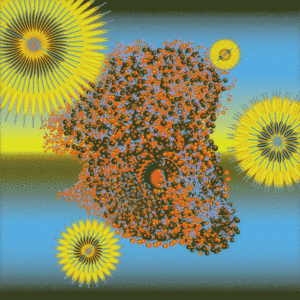A healing environment
New Lucile Packard Children's Hospital Stanford includes family and nature in care
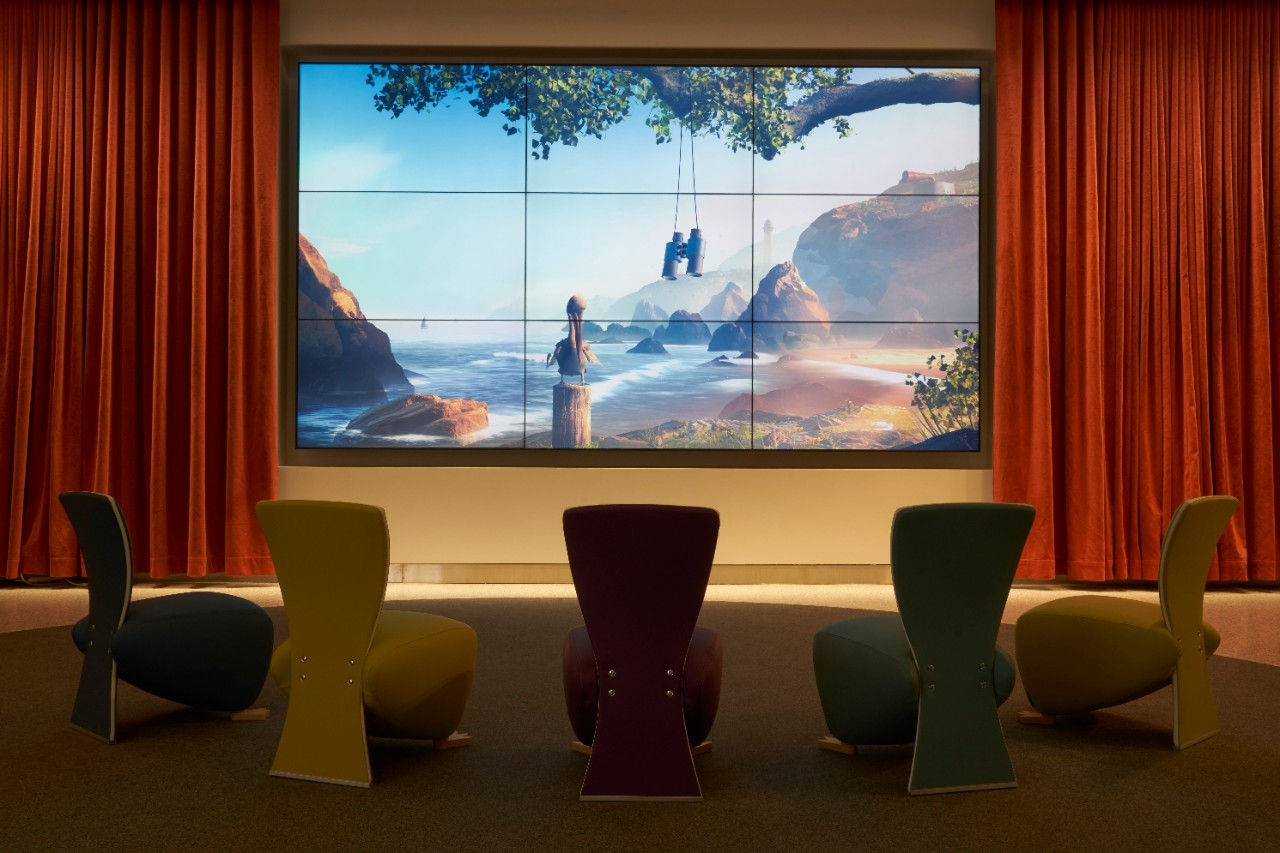
When Diane Flynn’s third child was born with a cleft lip in 2001, her family embarked on a series of six surgeries and appointments with dozens of specialists at Lucile Packard Children’s Hospital Stanford that spanned eight years. For the Flynns, the hospital became a second home.
It wasn’t long before Flynn felt compelled to give back to the hospital that was so supportive of her family, so she contacted the director of the hospital’s Family Advisory Council and became one of five parent leaders of the group, which provides firsthand feedback on everything from bedside care to food service.
Eight years later, in 2009, the hospital team that was starting to plan for a new children’s facility wanted to gain an understanding of needs from the perspectives of a wider group. They created a design committee that included representatives from the project’s two architectural firms, hospital staff, board members, faculty and members of the Family Advisory Council.
“About 10 years ago, before the design team or architects had plans, they had parents,” says Flynn, who joined the committee as her son, Matthew, now 16, was spending less time in treatment. She wanted to be a voice for families like hers.
The committee’s meetings became open forums for input and brainstorming about what they wanted to see in the new campus. “It didn’t take long for us all to agree — a restorative space that felt light, healing, engaging,” Flynn says.
That feedback about the ambiance and surroundings in the new space is present in nearly every aspect of the new building, which is just weeks away from its December opening. The building, which houses the medical community’s most advanced medical tools, is meant to be responsive to changes in pediatric care as it evolves. But the guiding principle is for the facility to reflect a holistic approach to healing — focusing on the family at the heart of patient care and creating a restorative environment by integrating nature and art.
The concept is reminiscent of Lucile Salter Packard’s founding vision for the hospital: to nurture the body and soul of every child. She recognized the power of nature as an important part of healing. She wanted kids to be treated like kids —not just patients. And she believed that caring for a child involved the whole family.
Feelings matter
There is deep evidence that a hospital’s physical environment and the well-being of patients and families are closely related. In 1984, two years before planning for the existing Packard Children’s Hospital began, Science published a study by environmental psychologist Roger Ulrich, PhD, that was lauded as the first to use modern medical research to support the healing effects of nature, an approach he called “evidence-based design.”
Ulrich studied 23 gallbladder surgery patients who recovered in rooms with windows looking into a natural scene and 23 whose rooms looked out to a brick wall. He found that the patients with views of nature stayed in the hospital an average of one less day, had 3.5 times fewer negative comments from nurses, such as “frustrated behavior” or “upset and crying,” and took fewer and weaker medications compared with the other patients.
“By the early 1980s, evidence supporting the stress-reducing effects of nature was so consistent, and we understood that natural beauty’s effects were much more than skin deep,” Ulrich says. “I began to wonder where could this be useful, and the main answer surfaced at hospitals —a location where people are captive for a period of time if they’re bedridden, where they are experiencing stress and pain, and for whom distraction facilitated by looking at nature might help improve recovery outcomes.”
Now, he explains, it is routine for hospitals to be built to support a positive psychological experience for patients, but he points to the existing Packard Children’s Hospital as “an early adopter” when it opened in 1991.
“It was one of the first hospitals I was consciously aware of that had explicitly used the emerging field of evidence-based design to inform the design,” he says of the facility, which was acclaimed for having nature-based and family-centered themes, with terraces on each floor and a garden at the center.
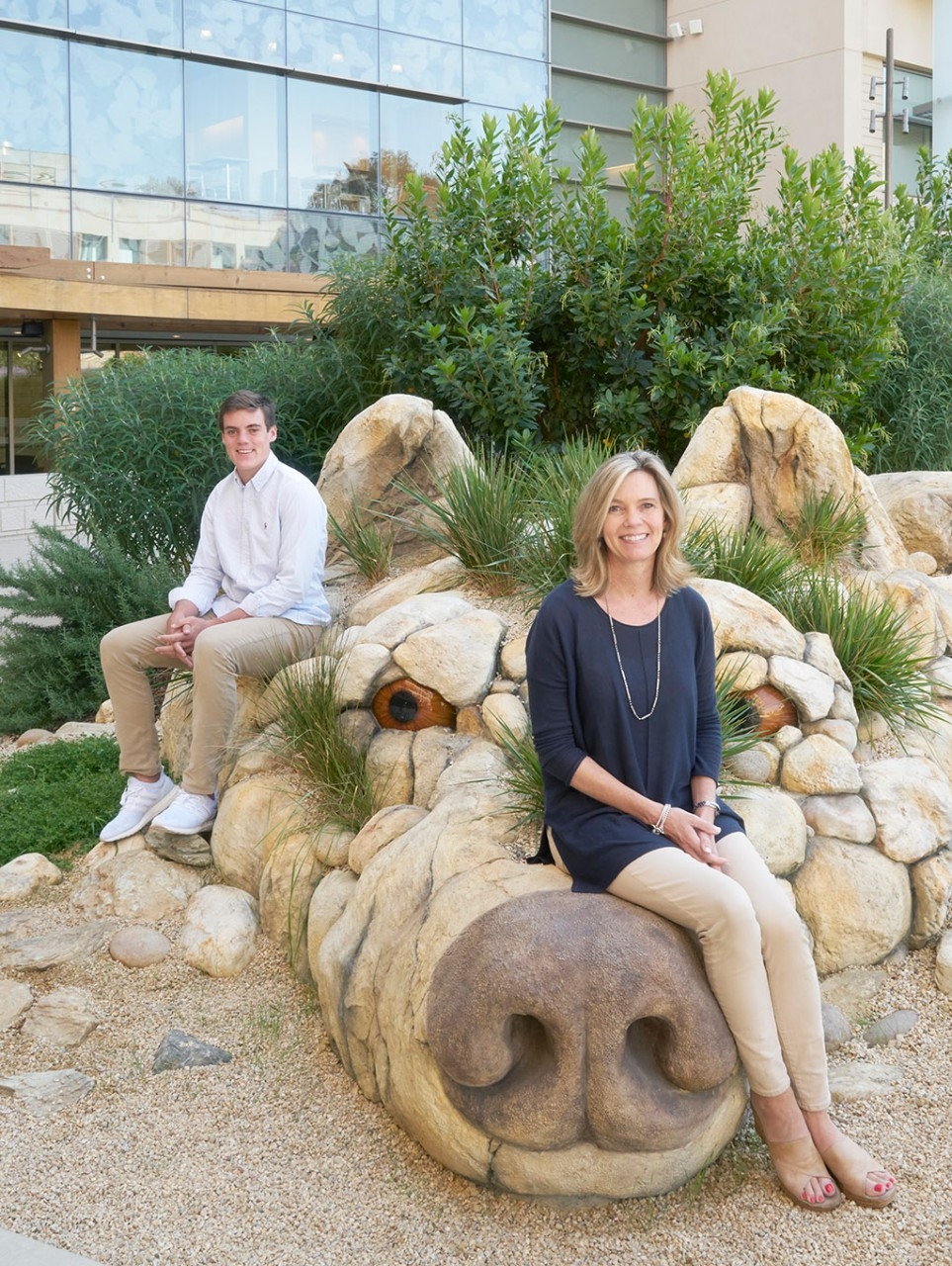
Architects of the new building, which is connected to the existing hospital, took a similar approach by challenging the fundamental mindset of being inside a hospital, beginning with the experience of patients as they arrive.
“A common issue in health care is that traditional hospital design places operating rooms and imaging services on sub-ground-level floors to accommodate heavy surgical and diagnostic equipment,” says Robin Guenther of Perkins+Will, lead architect for the new building. Perkins+Will collaborated with HGA on the project. “In the last generation of hospital building about 30 years ago, people weren’t really crafting an experiential journey for patients. They were focused on accommodating the technology — hospitals for machines.”
But the practice of moving patients down into a basement level, she explains, can exacerbate feelings of fear or anxiety that patients — particularly children — experience prior to such “scary procedures” as surgery. Reflecting a shift away from this, the new hospital’s pedestrian entrance is at ground level, which is also the location of the treatment center (surgery, interventional services, imaging and nuclear medicine).
Families don’t have to traverse below ground and instead enter the main lobby and have only a few choices about where to go next: up the staircase or elevator, or across the lobby into the surgery and imaging unit.
“From a patient experience perspective, it is revolutionary,” Guenther says.
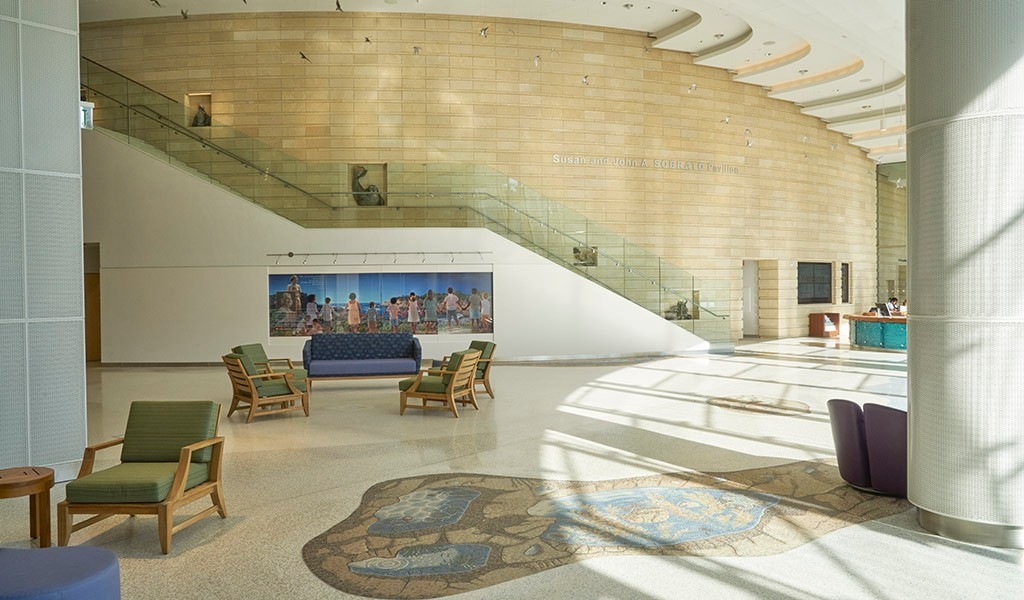
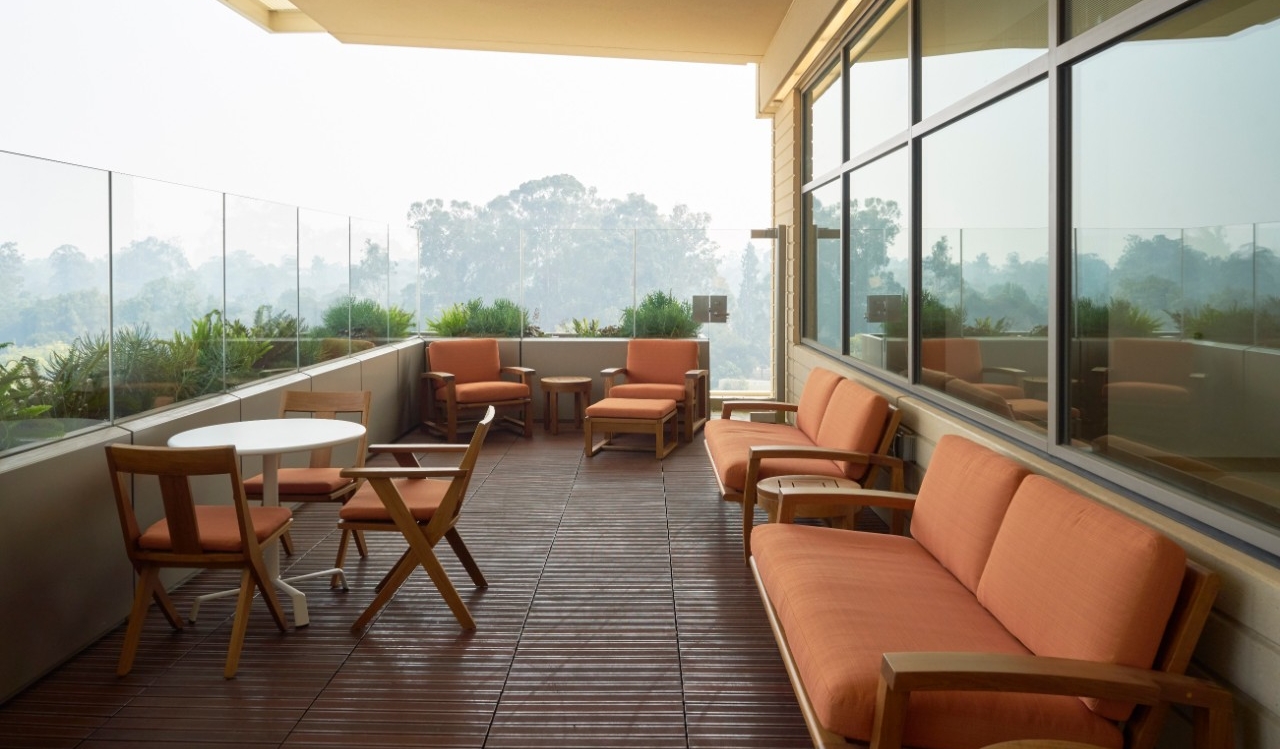
The challenge is that the most public part of the new hospital — the lobby — is directly adjacent to the most private area — the surgical treatment center. To marry these spaces, lobby walls are lined with enclosed alcoves where families can wait. On each ascending inpatient floor, open spaces contain wood-paneled niches that resemble treehouses to provide private spaces for those who seek it.
“What we heard from families is that when they aren’t in a patient’s room, they tend to gather in public spaces, rather than in waiting rooms behind closed doors,” explains Jill Sullivan, vice president of strategic space planning and general services.
Architects also wanted to reflect elements of Northern California’s native environment to provide a sense of being alongside nature as you move through the building, despite being in a hospital, Guenther explains.
Outside, 3.5 acres of gardens and green space surround the building, and inside, waiting areas have large picture windows. Each patient room has a planter box outside the window and a view to the gardens, and about 150 feet of the new cafeteria space is lined with glass doors that open to an outdoor dining patio overlooking a garden. The garden has native plants and animal installations that represent California’s eco-regions, including a puma den, a gopher’s burrow and a redwood tree fort.
Most uniquely, each of the building’s four patient care levels has two outdoor decks — one for patients and visitors, and one for staff.
“Patients, family members, visitors, even staff can be too pressed for time to travel down the elevator and search outside for a garden,” Ulrich explains. “To have a restorative, outdoor area on each floor is very important from the standpoint of ensuring easy access to nature and thus positively impacting patient health.”
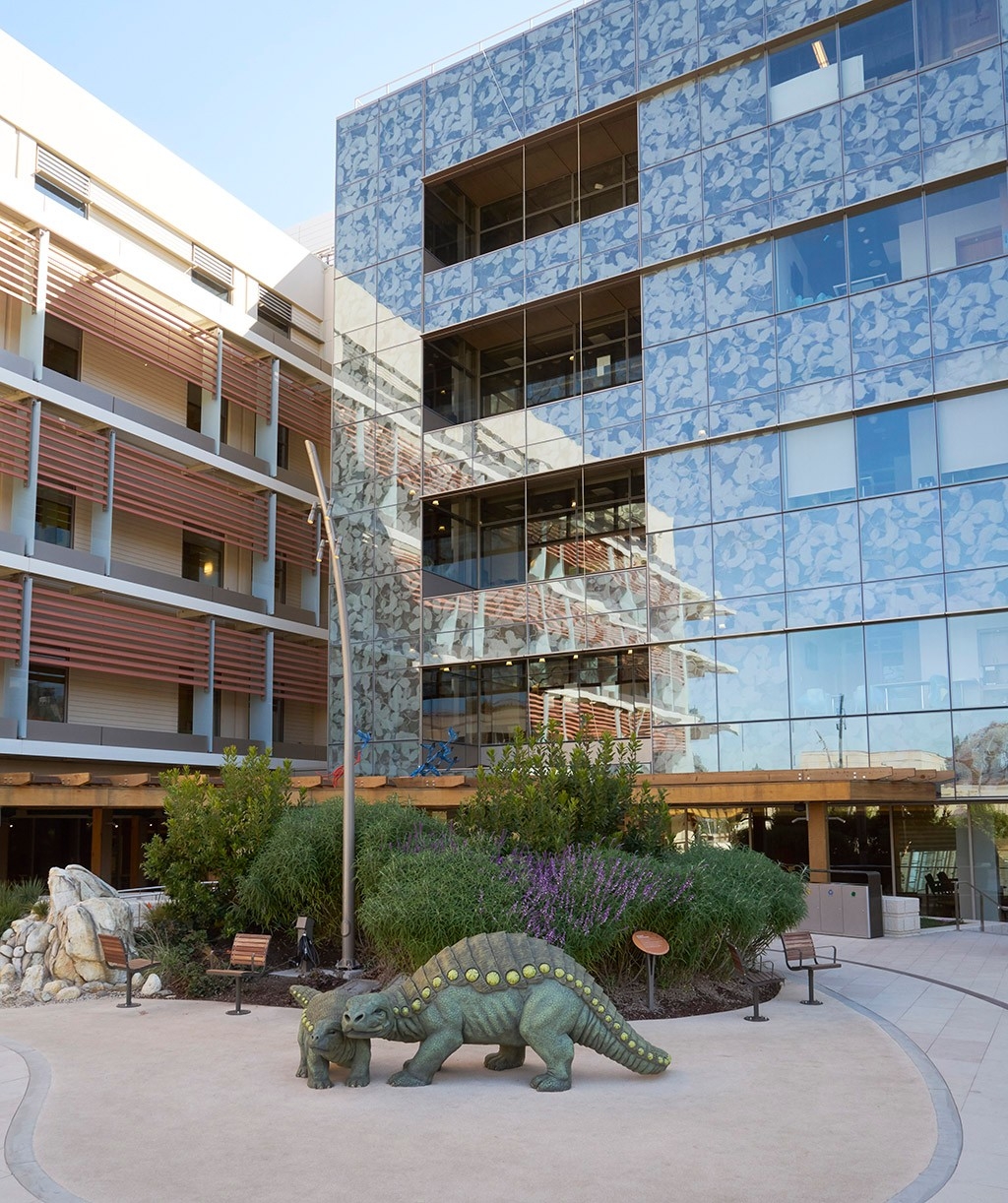
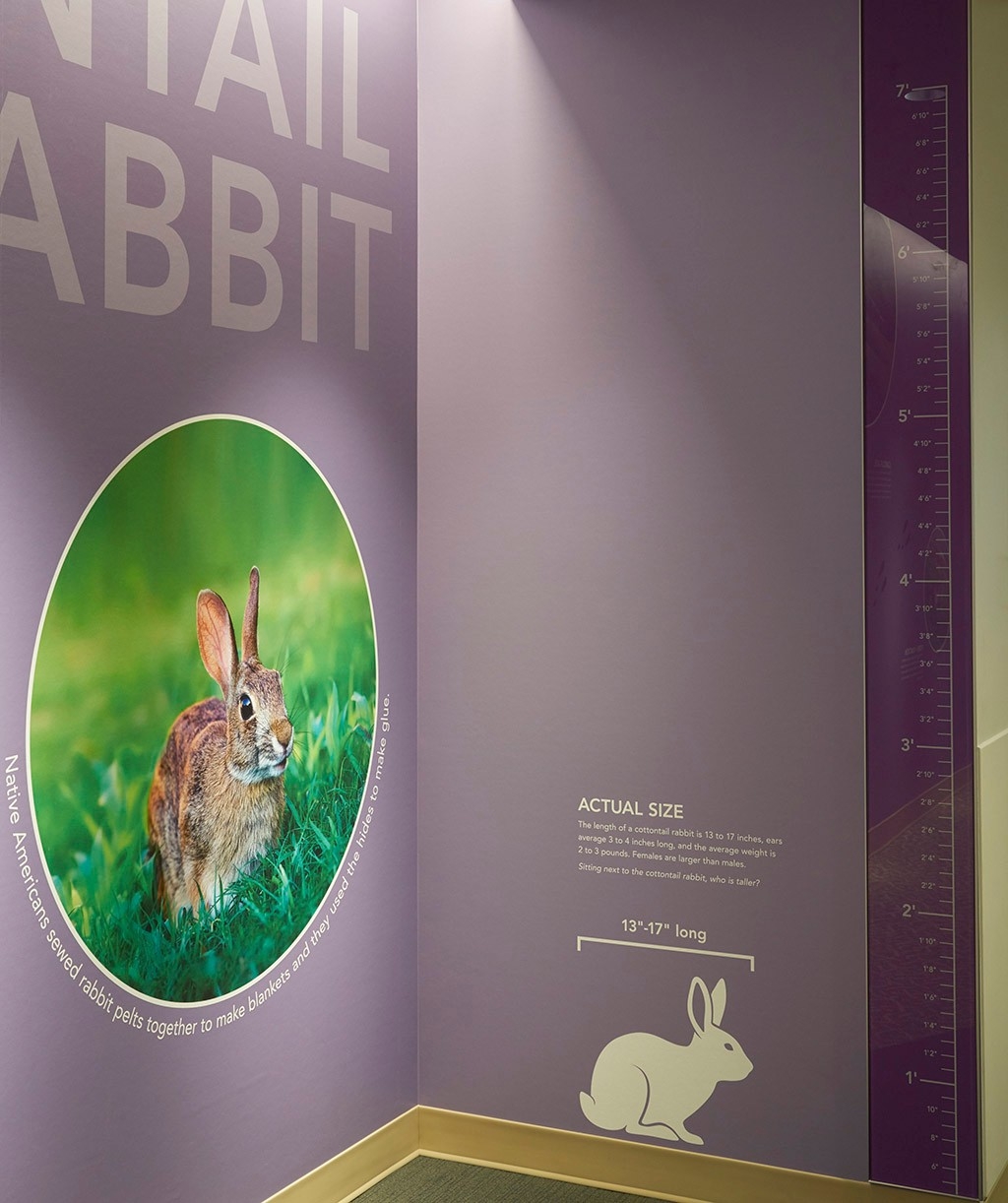
Guenther says that, in the past, safety concerns prevented the construction of outdoor spaces on above-ground levels.
“The idea of outdoor space on nursing units is one where Packard Children’s is at the beginning of a new curve in design,” she says, explaining that 6-foot-tall tempered safety glass panels enclose each deck to prevent people from falling. “It is a new generation of outdoor space that really is easily accessible to patients and families.”
The hospital’s use of natural light and focus on a holistic approach to healing is also embodied in the sanctuary space, which includes a private healing garden and access to a meditative labyrinth. The concept breaks a mold that was popularized during the increased secularization of health care beginning in the latter half of the 20th century, when design shifted from common cathedral-inspired hospital chapels to minimalistic spaces.
“In the last generation of hospitals, the idea of spiritual space became so minimal that it became a conference room. This hospital reintroduces a sanctuary space that is truly special,” Guenther says.
As the new sanctuary was conceptualized, the team again called on the Family Advisory Council, whose members represent a variety of faiths (and non-faith), to build something that would appeal to many spiritual beliefs and backgrounds. The result “is a space that is multicultural, multidimensional and goes beyond religious practice,” Guenther says. “It is about recognizing that we are whole people who have physical bodies, minds and a spirit and we need to provide a place for people to keep in touch with that.”
Sweating the small stuff
For patient rooms, architects took care to treat them as the center of a child’s hospital experience, and not just a place for essential medical equipment and visits from clinicians. Architects designed them to be healing, comfortable spaces for the whole family. Nearly all of them are private and more spacious to serve as home base for mealtimes, movies and games and include sleeping accommodations for two family members.
“When a parent can have a private room, their own space with their child, they can create a quiet and healing space,” says Karen Wayman, director of the Family Advisory Council. “That’s so important for a parent’s relationship with their child.”
To refine the rooms, full-scale detailed mockups were constructed in an off-site warehouse. Everything was in place, including medical equipment, patient beds, sinks, televisions, light switches, outlets and hand sanitizer dispensers. Then representatives from the full care team of physicians, nurses and parents walked through to share feedback.
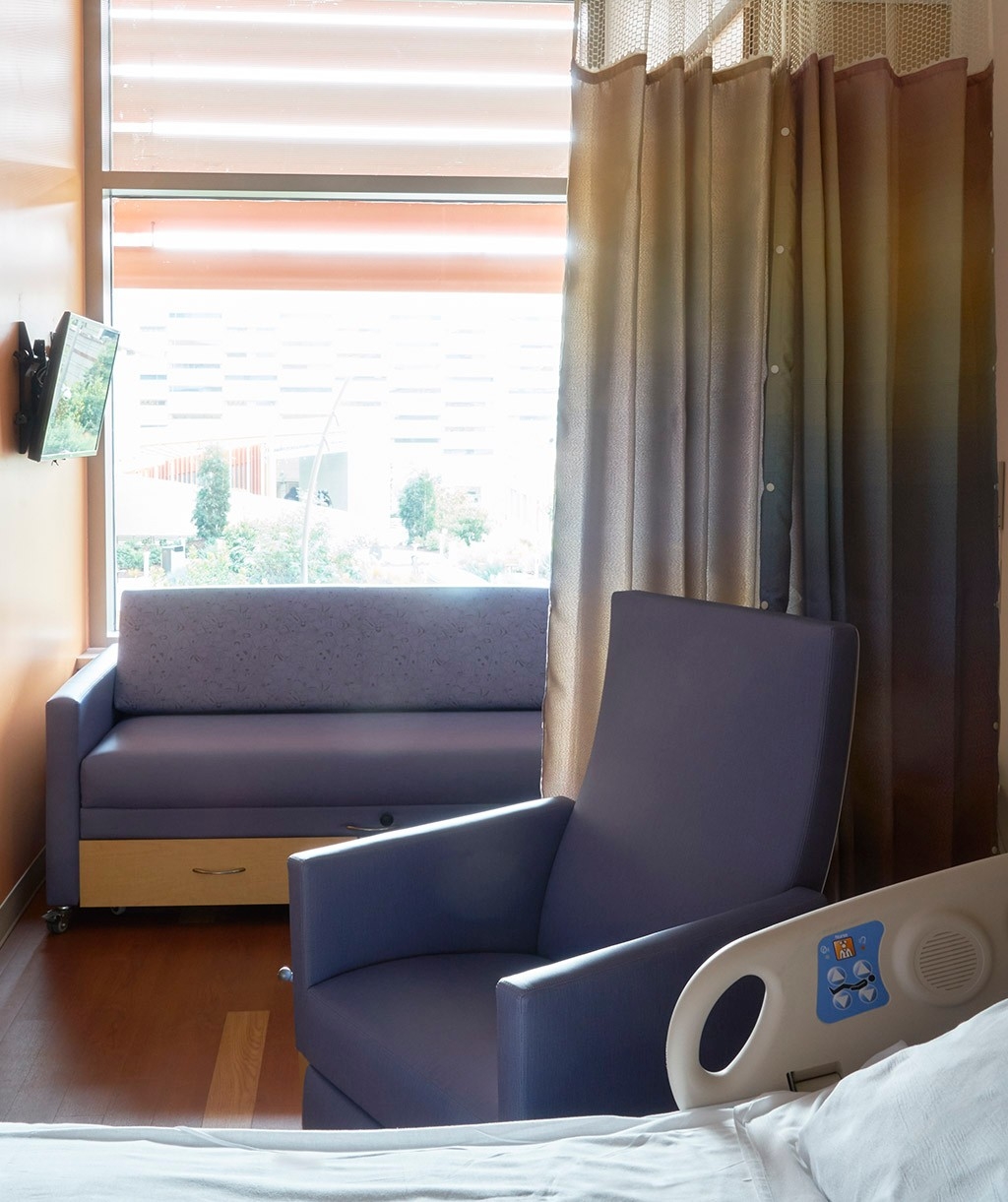
“We reviewed bedside tables, tried different sleeper beds, tested the comfort of rocking chairs, examined the distance from the couch to the patient’s bed, to the television and to the phone charger built into the wall,” Flynn says. “Everyone had a different perspective. For me, the lighting was really important. When my son was in the hospital, I didn’t want to disturb him by turning on the overhead lighting to read, so for the new building the design committee made sure we would have cozy reading lights in each room.”
Parents also championed having bathtubs in many of the bathrooms instead of standing showers to make bath time easier for little ones. Their input also resulted in the inclusion of a family lounge, laundry facilities and family kitchen on every patient floor to help families maintain day-to-day routines. “You just don’t think about it until you walk it from a patient or parent perspective,” Flynn says.
The collaboration between providers and parents was key, Wayman explains. “Providers learned about the parents’ experiences in the hospital, and parents had an opportunity to see how things worked from the provider prospective,” she says. “Both sides of the equation were critical to creating a healing space.”
Physicians, nurses and other health care team members evaluated where equipment would be placed and whether there was enough room to maneuver when treating children in their rooms, and weighed in on aesthetic details. When pediatric anesthesiologist Chandra Ramamoorthy, MD, saw that the rooms were painted periwinkle blue and yellow, she instantly knew they would need to be changed. In the blue rooms, it would be difficult to ascertain between the reflection of the wall color and cyanosis — a bluish discoloration in patients whose blood isn’t getting enough oxygen.
“We had initial designs in place for the room mockups, and I don’t think a single thing stayed the same,” Sullivan says. “Every design choice for the new building was made with the intent to put autonomy and control into the hands of children and families, staff and providers, and frankly we wouldn’t have thought about these details without engaging the staff and the families who will actually be using the space.”
Stimulating the mind, restoring the body
Finally, priority was placed on families being able to connect the worlds of learning and healing, mind and body, resulting in a space that includes abundant access to nature, art installations, play spaces and other interactive elements.
“You’re always trying to engage your child in something when you’re in the hospital. When my son had to fast before his surgeries, we would walk the halls to try to keep his mind off his hunger,” Flynn says. “We’d stop at the art on the walls and play ‘can you find’ games. Bringing in art and other elements of interactive play like this to the new hospital was crucial.”
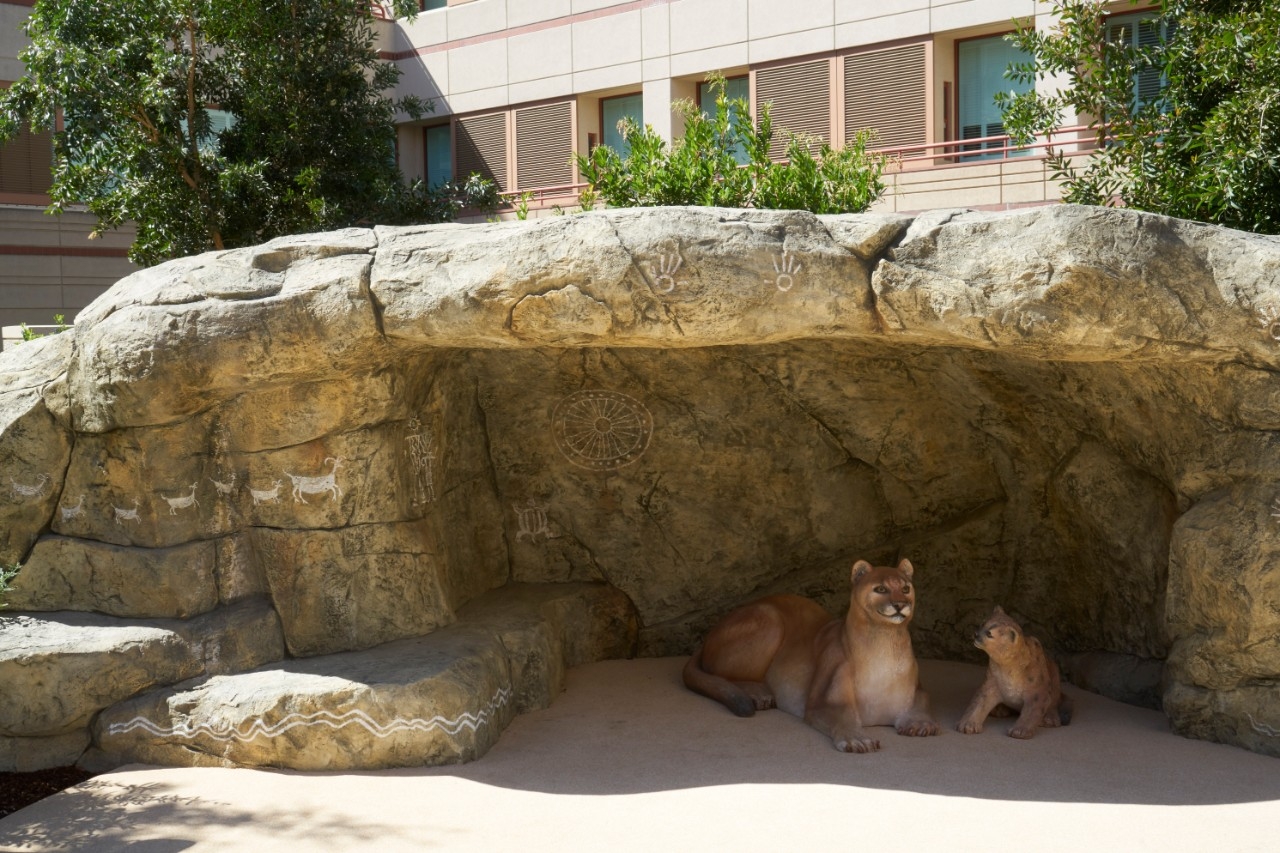
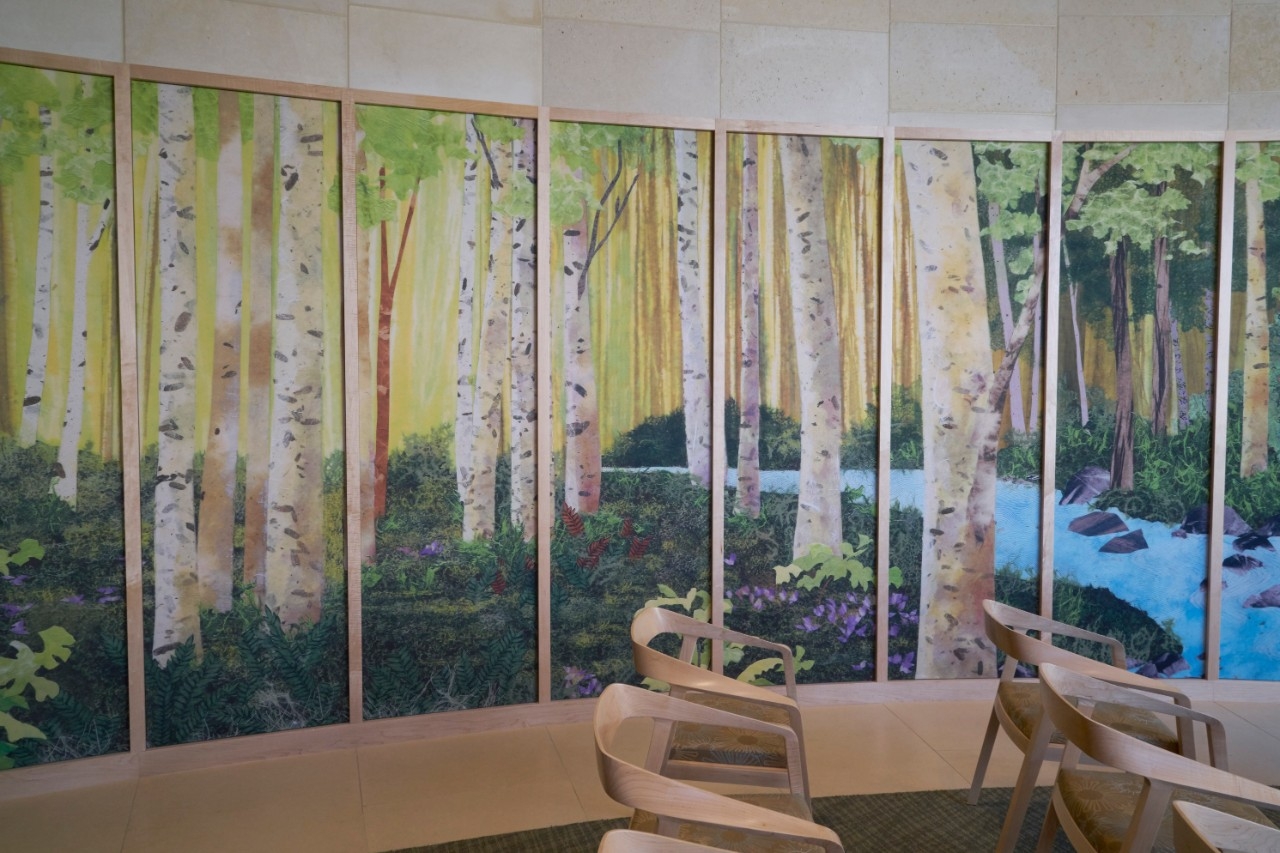
Thematically, opportunities to learn about the local environment and nature themes are prominent across the campus. Paths of animal footprints native to California are implanted throughout the hospital’s gardens for visitors to follow and learn about the state’s diverse wildlife. The main elevator core on each level of the new facility is built to look like a tree growing through the center of the building, clad in reclaimed old growth redwood salvaged from the deconstructed Moffett Field hangar in Mountain View, California.
Aspects of California’s ecosystems are also part of the foundation for the building’s visual “way-finding” system, implemented to help direct people through the building. Stanford University ecologists and patients at the existing Packard Children’s Hospital helped select two animal “ambassadors” native to each floor’s eco-region. Sculptures of them are tucked into stone niches along the main entrance and are repeated near the elevators and in colorful signs on each floor, helping families find their way around.
Patients — and their siblings — also helped the design committee select interactive play structures for the hospital’s gardens and large animal structures that serve as directional landmarks on each floor. Artist Sherri Warner Hunter conducted workshops during which patients created crayon and oil pastel drawings of rocky shore creatures, and the drawings have been turned into mosaics that are inset on the underside of several of the play structures and furniture in the garden.
“This is a Northern California hospital in a place where people value preservation of species and nature. It was important to create a building that exhibited stewardship of those values,” Guenther says.
But an element of whimsy fit for children remains. At first, the inclusion on the third floor of a life-size sculpture of a pair of hadrosaurs — the only known dinosaurs to live in Northern California — worried parents on the design committee. “We were concerned that a dinosaur would be scary to little kids,” Flynn recalls. So at the suggestion of the design committee, the dinosaurs are wearing bunny slippers to make them look more friendly.
Indoor playrooms on each floor, designated by age group, provide spaces for pet therapy, arts and crafts, group games and other activities that involve the whole family.
“There is endless evidence that supports the medical need for healing elements in the hospital. But at the end of the day, what makes it work is that it feels very human. What we wanted was an expansion of Lucile Packard’s original vision that would not lose the charm and the humanity of the original,” Guenther says.
“As a parent who has had a sick child,any time you step foot into a hospital it brings back a rush of emotions. Some good, some challenging,” Flynn reflects. “For me, despite the difficult memories, I always had this feeling that the hospital was a pleasant place to be and I tend to get filled with an overwhelming amount of gratitude for that. I keep envisioning my son in the new space at 2 and 3 years old. He would have absolutely loved the new garden, the sculptures, the opportunity for exploration.”
Wayman echoes that: “Parents bring the lived experience with them. They’ve walked the walk with their children. While care teams’ lived experience is providing care and they have an invaluable perspective on the safety and efficiency of the new design, families look at it with heart. And no one else can do that.”
